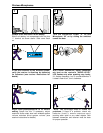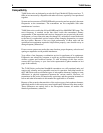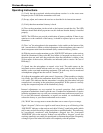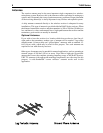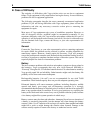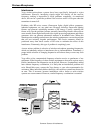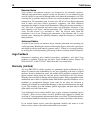
Interference
Vega wireless-microphone systems have been specifically designed to reject
interference. However, interfering signals might fall directly on the receiver
frequency, making it impossible to avoid problems completely. As mentioned
above, this can be a particular problem if the receiver audio is left open when the
transmitter is turned off.
Problems with RF noise sources (fluorescent lights, digital effects generators,
industrial equipment, etc.) are quite rare. However, defective fluorescent lighting
fixtures can generate astonishing amounts of RF energy. Usually, repairing the
fixture will cure the problem, because normally functioning fixtures almost never
cause trouble. Some digital audio and video signal-processing equipment and effects
generators also can generate substantial amounts of broadband noise. When this
situation exists, nothing can be done to the wireless equipment to correct the problem
that will not seriously degrade performance. The receive antennas should be
positioned away from these sources of RF noise to minimize the effect of this
interference. Fortunately, this type of problem is surprisingly rare.
A more serious problem is selection of wireless-microphone operating frequencies,
which are inherently subject to interference due to intermodulation. Fortunately, a
proper initial selection or changing frequencies will almost always correct any such
problem.
Vega offers a free computerized frequency-selection service to purchasers of our
equipment. If the frequency of other wireless equipment to be used in a given area is
known, interference-free frequencies can be chosen. However, if equipment is added
later without frequency coordination, it is likely that an interference problem will
exist. Should this occur, contact the Vega factory or your sales representative for
assistance. Many individuals believe that only a few wireless systems may be used in
an area. This is incorrect, because installations with a dozen or more wireless
systems are not uncommon. However, careful frequency coordination is essential.
Wireless-Microphones 9
Common Sources of Interference





